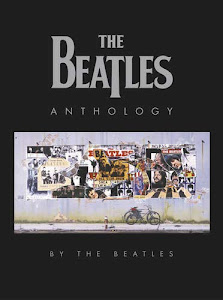
The Swerve – How the World Became Modern
Catégorie: Sciences, Techniques et Médecine, Scolaire et Parascolaire
Auteur: Martha Wells, Janet W. Hardy
Éditeur: John Green, Catherine Shepherd
Publié: 2018-02-05
Écrivain: Ed Piskor, John Murphy
Langue: Chinois, Français, Catalan, Espagnol, Grec
Format: eBook Kindle, Livre audio
Auteur: Martha Wells, Janet W. Hardy
Éditeur: John Green, Catherine Shepherd
Publié: 2018-02-05
Écrivain: Ed Piskor, John Murphy
Langue: Chinois, Français, Catalan, Espagnol, Grec
Format: eBook Kindle, Livre audio
LS2 PAC - or - Log in with either your Library Card Number or EZ Login. Library Card Number or EZ Username PIN or EZ Password. Remember Me
Stephen Crane - American Literature - Crane's first book, Maggie, A Girl of the Streets, was about an innocent slum girl and how she fell into the world of prostitution. Quite scandalous for the times, Crane published this work under the pseudonym "Johnson Smith" in 1893 at his own expense
The Swerve: How the World Became Modern - Kindle edition - The Swerve: How the World Became Modern - Kindle edition by Greenblatt, Stephen. Download it once and read it on your Kindle device, PC, phones or tablets. Use features like bookmarks, note taking and highlighting while reading The Swerve: How the World Became Modern
127 years of modern automobile evolution - World Mysteries - · 127 years of modern automobile evolution. The year 1886 is regarded the year of birth of the modern automobile – with the Benz Patent-Motorwagen, by German inventor Carl Benz. Motorized wagons soon replaced animal-drafted carriages, especially after automobiles became affordable for many people when the Ford Model T was introduced in 1908
De rerum natura - Wikipedia - De rerum natura (Latin: [deː ˈreːrʊn naːˈtuːraː]; On the Nature of Things) is a first-century BC didactic poem by the Roman poet and philosopher Lucretius (c. 99 BC – c. 55 BC) with the goal of explaining Epicurean philosophy to a Roman audience. The poem, written in some 7,400 dactylic hexameters, is divided into six untitled books, and explores Epicurean physics through poetic
The Swerve: How the World Became Modern: Greenblatt - Also General Editor of The Norton Anthology of English Literature, he is the author of eleven books, including Tyrant, The Rise and Fall of Adam and Eve: The Story that Created Us,The Swerve: How the World Became Modern (winner of the 2011 National Book Award and the 2012 Pulitzer Prize); Shakespeare's Freedom; Will in the World: How Shakespeare Became Shakespeare; Hamlet in …
Lucretius (Stanford Encyclopedia of Philosophy) - · He became a key influence on the emergence of early modern atomism in the 17 th century—a development above all due to Pierre Gassendi’s construction of an atomistic system which, while founded on Epicurus and Lucretius, had been so modified as to be acceptable to Christian ideology. Lucretius’ many admirers in the early modern era included Thomas Jefferson, a self …
Stephen Greenblatt - Wikipedia -
Jean XXIII (antipape) — Wikipédia - (en) Stephen Greenblatt, The Swerve : How the world became modern, New York, W. W. Norton, 2011, 356 p. (ISBN 978-0-393-34340-3). Yves-Marie Hilaire, Histoire de la papauté. 2 000 ans de mission et de tribulations, Tallandier, 2003. Portail du christianisme; La dernière modification de cette page a été faite le 1 octobre 2020 à 10:44. Droit d'auteur: les textes sont disponibles sous
Depiction of women in literature through ages - Times of India - · A lot of it has to be blamed on the fact that in the ancient world, literacy was strictly limited, and the majority of those who could write were male. However, the contribution of women to oral f
[kindle], [download], [audible], [read], [english], [online], [epub], [pdf], [audiobook], [goodreads], [free]













0 komentar:
Posting Komentar
Catatan: Hanya anggota dari blog ini yang dapat mengirim komentar.